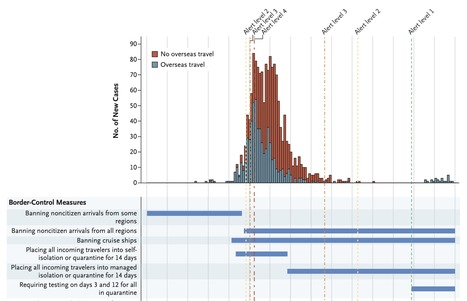In New Zealand, rapid, science-based risk assessment linked to early, decisive government action was critical to containing Covid-19. Soon after initial descriptions of an outbreak in Wuhan, China, were shared, reports in late January 2020 (https://www.thelancet.com/journals/lancet/ article/PIIS0140-6736(20)30260-9/fulltext) confirmed that Covid-19 was almost certain to become a serious pandemic. Despite New Zealand’s geographic isolation, we knew that introduction of SARS-CoV-2 was imminent because of the large numbers of tourists and students who arrive in the country each summer, predominantly from Europe and mainland China. Our disease models indicated that we could expect the pandemic to spread widely, overwhelm our health care system, and disproportionately burden indigenous Maori and Pacific peoples. New Zealand began implementing its pandemic influenza plan in earnest in February, which included preparing hospitals for an influx of patients. We also began instituting border-control policies to delay the pandemic’s arrival.
New Zealand’s first Covid-19 case was diagnosed on February 26 (see Figure 1). That same week, the WHO–China Joint Mission’s report on Covid-19 (www.who.int/docs/default-source/ coronaviruse/who-china-joint-mission-on-covid-19 -final-report.pdf) showed that SARS-CoV-2 was behaving more like severe acute respiratory syndrome (SARS) than like influenza, which suggested that containment was possible....
Published in NEJM (August 7, 2020):
https://doi.org/10.1056/NEJMc2025203
Via Juan Lama



 Your new post is loading...
Your new post is loading...








